Dam removals devastated the Klamath. Will agriculture take the fall?
In a dire warning for planned dam removals across the American West, journalist Theodora Johnson reveals the dark truth about the Klamath Dam removals in Northern California.
I am a rancher in Siskiyou County, California, home to three of the four hydroelectric dams that were recently destroyed on the Klamath River. I’m also a freelance journalist who has written about prospective Klamath Dam removal for 10 years.1
Despite what you may have heard in mainstream media reports, this project has proven to be the largest, most devastating dam removal experiment in modern history, for both wildlife and residents. Our region now faces physical and political threats because of dam removal. If not headed off, these threats will destroy our agrarian economy and culture.
“Restoration” projects are rolling out—performed by the same parties responsible for the environmental and humanitarian disaster along the Klamath River.
With the dams gone, the lives and properties of residents along the Klamath River are now at risk of severe flooding, wildfire, water pollution, well shortages and possible contamination, and even air pollution from toxic dried sediment. On March 26, 2024, Siskiyou County declared a state of emergency due to these conditions. An entire community alongside former Copco Lake was effectively destroyed. Businesses along the Klamath that relied on recreational fishing have been crippled.
While “saving salmon” was the alleged reason for the project, it has, in fact, harmed salmon populations—and millions of other aquatic and terrestrial species, including numerous ESA-protected species. Extreme quantities of sediment from the former reservoirs have polluted the Klamath and settled on the river bottom. Low fall flows will now plague salmon in all but the wettest years, delaying salmon fall migration—as was the case before the dams were built.
Pre-dams, stretches of the upper Klamath would often go underground in the summer, leaving fish to rot in the sun. The Natives called it the “Stinking River.” The upper Klamath is also naturally poor habitat for salmon and steelhead, as it starts out warm and rich in phosphorus in the marshes and volcanic rock of southcentral Oregon. Phosphorus feeds algae and makes for low-oxygen conditions that are bad for salmon.
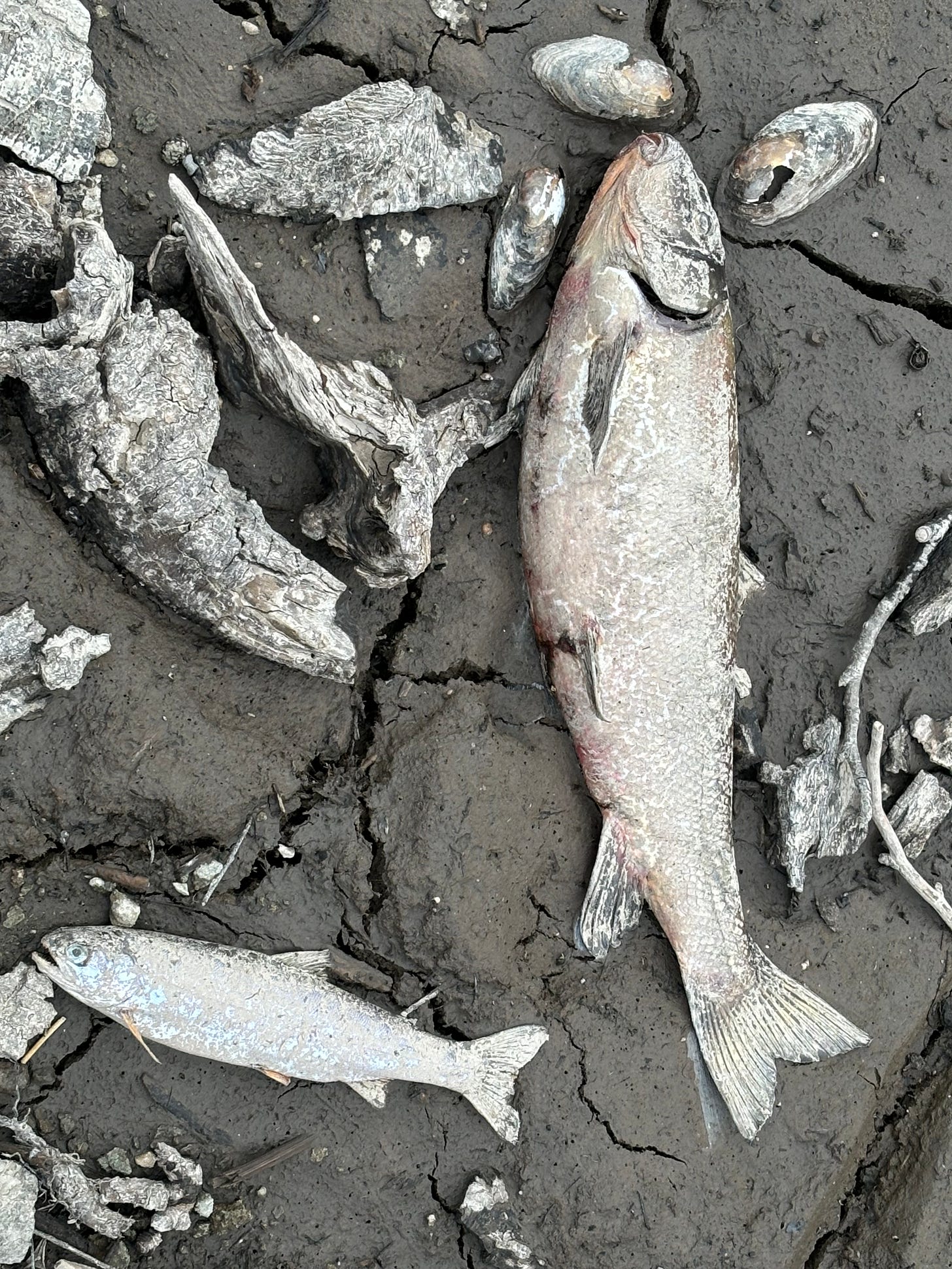
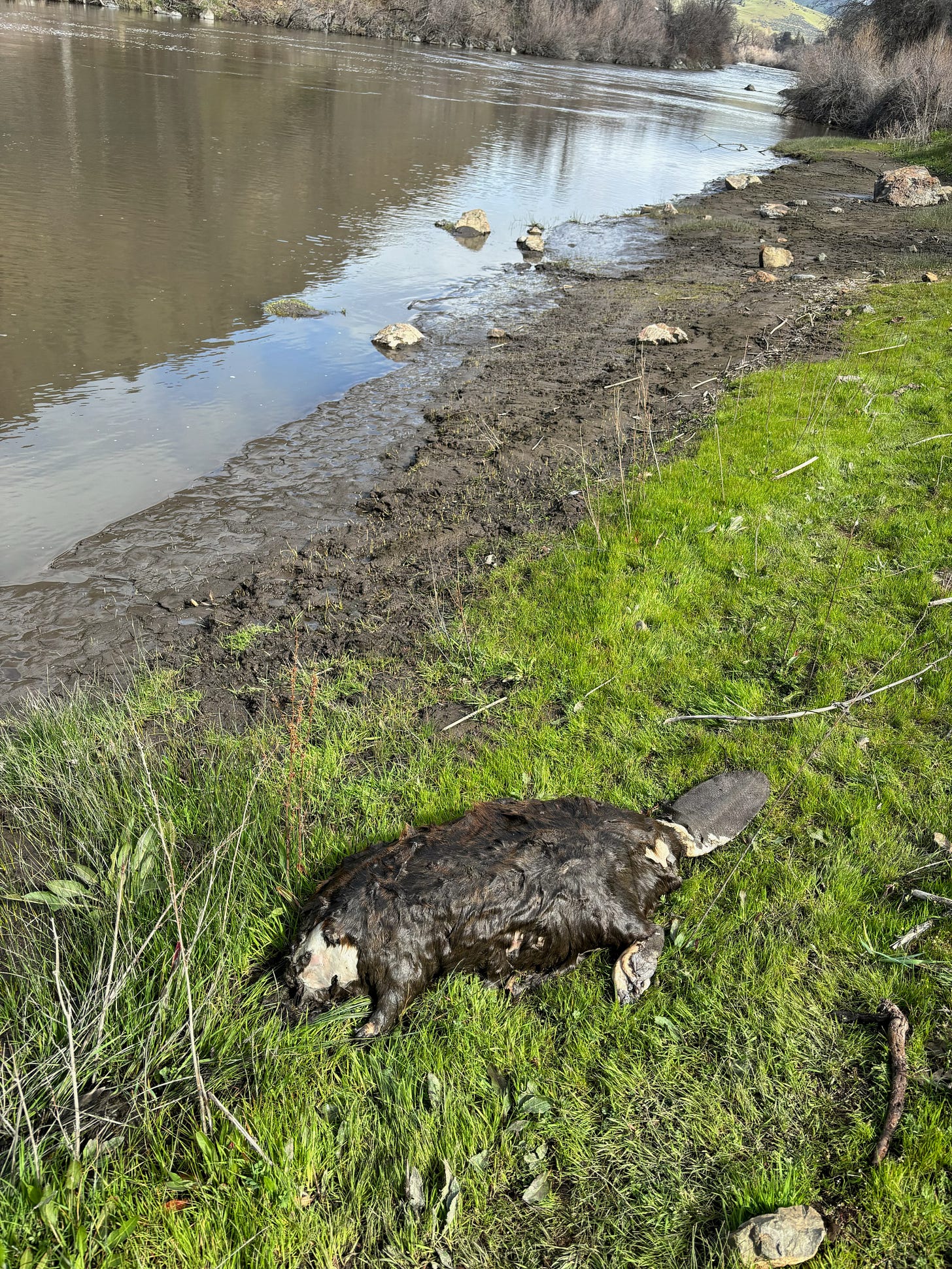
The parasitic load has not improved as some had hoped. Ceratonova shasta is a parasite endemic to the Klamath River that kills salmon. It feeds on the fine, organic sediment now settled in the river. C. shasta will now be able to spread to areas above the dam.
These risks were all predicted. In fact, a whistleblower at Department of Interior (DOI) was fired in 2011 for bringing many of these uncertainties up. Dr. Paul Houser, PhD, the Scientific Integrity Officer and lead science advisor at the Bureau of Reclamation in 2011, said he was told by a superior at DOI, “The secretary [Obama-era Secretary Ken Salazar] really wants to remove those dams, so you’ve made a poor decision in putting your disclosure forward.”
Dr. Houser was also lectured numerous times about sending emails that could be “discoverable documents” in FOIA requests. He was fired soon thereafter.
He said it was apparent that DOI and the state agencies had already made the decision to pull out the dams—before any environmental or economic impact studies were completed. Any information that detracted from that goal was not to be brought up.
Agriculture must not take the blame for the harm done by dam removal.
The damage to fish and the river has already been done. But the damage to agriculture in our region could be just getting started—especially if the dam-removal advocates can paint the right picture. Agriculture must not take the blame for the harm dam removal has done.
Agriculture is the foundation of our rural agrarian culture and the most important remaining natural resource industry in Siskiyou County, as logging and mining have been largely shut down due to environmental regulations.
Two groups of farmers and ranchers in the Klamath Basin are in the crosshairs: those in the Klamath Reclamation Project area—180,000 acres of farms and ranches in both Oregon and California—and those farther downriver in the Scott and Shasta watersheds, two tributaries to the Klamath River.
As for the first group, BOR has infamously and for many years denied them their full water allocations from Upper Klamath Lake, instead using the water to support flows for salmon in the Klamath River. Paradoxically, some parties are calling for removal of the Link River and Keno dams, the only two still existing on the Klamath River, even though this will completely remove any ability to sustain steady flows in the Klamath in late summer and fall. Removing these dams would also force hundreds of farmers in the Upper Klamath out of business.
As for the second group of farmers along the Scott and Shasta rivers, for years—and increasingly so—NGOs, tribes and state agencies have been blaming agriculture for harming flows and fish in the Scott and Shasta rivers; this, despite the facts that many factors affect both fish and flows, and that agriculture uses a relatively small amount of water in those watersheds. For example, in the Scott River watershed, a tributary to the Klamath, agriculture is responsible for just 6% of water usage.
Disastrously for us, since 2022, the State Water Resources Control Board has been imposing 15 to 30% cuts to irrigation in Scott and Shasta in the name of saving fish! These draconian cuts haven’t demonstrably helped fish.
This taking of privately-held water rights is only made possible by Gov. Newsom’s fake “emergency drought” declaration, in place since 2021. We have not had drought conditions since April of 2023. There’s clearly another reason the state is taking our water.
Perhaps it’s to satisfy the demands of groups such as American Rivers, who wrote in March 2024 an article titled: “On the Klamath, Dam Removal Alone is Not Enough.” The article called for regulations on irrigation in tributaries such as the Scott to support mandatory “environmental flows” in the river. Again, they ignore the fact that Scott Valley agriculture uses just 6% of the water in the Scott watershed.
Right on cue, the State Water Board is now in the process of pursuing permanent instream flow regulations for both Scott and Shasta. State legislators have introduced a bill in support.
Agriculture is in the crosshairs.
“Dam removal itself seems to have been the singular aim, regardless of the environmental and human cost.”
The risks of dam removal were predicted for years by many others besides Dr. Houser, including former owner of the dams PacifiCorp, Siskiyou County Board of Supervisors, multiple members of U.S. Congress, and many local residents.
In 2010, 79% of Siskiyou County residents voted against dam removal.
Yet, all the warnings—and the will of the people—were ignored. In fact, taxpayers and ratepayers at Pacific Power were forced to help pay for dam removal.
Dam removal itself seems to have been the singular aim, regardless of the environmental and human cost.
The destruction of the dams was precipitated by two things: a massive coordination of mainstream media support, and agency decisions that were deeply political and void of true science or consideration of the human and ecological impacts.
In 2018, the Siskiyou County Board of Supervisors outlined in great detail its concerns with the “Definite Plan” adopted by Klamath River Renewal Corporation (KRRC), the nonprofit shell corporation formed to remove the dams. The County’s well-researched and detailed concerns appear to be coming to fruition.
The County also pointed out repeatedly that the project was sorely underfunded from the beginning, which would likely result in the County holding the bag. This has already proven true in the case of road repairs, water quality testing, and other areas. Note: the County believes the project has already far exceeded its budget, but the state has refused to disclose its expenditures.
January 2024: Project commences
As dam removal rolled out, the continuation of intense media misinformation and politically driven decision-making led to a rushed and belligerent process that was even worse for the river’s ecosystem and human residents than we had expected. After meeting with multiple process delays, KRRC appeared to be in a rush to complete the project before funding ran out—and before political conditions changed.
Starting in January of 2024, KRRC began drawdown of the reservoirs behind the dams, where an estimated 20 million cubic yards of toxic sediment were once safely trapped.2 We were told that removing any sediment from behind the dams was “too expensive,” and that “flushing” it was the only viable option.
By KRRC’s own estimate, 5-7 million cubic yards of that sediment was released into the Klamath River during initial drawdown. For several months, suspended sediment levels in the river varied from 2,000 to 16,000 milligrams per liter3 over a stretch of at least 60 miles—levels that are approximately four to 30 times what juvenile salmon can survive.4 Dissolved oxygen hit zero twice. Millions of native species were killed in and along the river; the entire food web has been destroyed. Wildlife were bogging down and dying in the footprints of the reservoirs, as well.
Locals were shocked and dismayed. Many began calling the river, which reeked of dead animals and toxic sludge, the “River of Death.”
Problematic for salmon—short and long term.
The timing of the sediment release was particularly problematic for fish: coho salmon, a “threatened” species under the Endangered Species Acts, juveniles normally begin entering the Klamath in early March. Both coho and Chinook juveniles normally outmigrate to the ocean via the Klamath River until early June. During most of that time, the Klamath looked like chocolate milk. Any existing Chinook salmon and steelhead eggs and juveniles in the river were destroyed with the initial drawdown. We will not know for several years how—or if—that generation survived.
Then in August and again in September, KRRC led the removal of the remaining dam structures—and suspended sediment again spiked. More native aquatic species were found dead along the banks. To this day, a resident living at river mile 180 reports “no life in the river.”5
Chinook salmon adult returns this past fall were 50% of expected levels, according to a February 2025 Pacific Fisheries Management Council report. This was predictable: the dams were removed in the dirtiest way possible, and with terrible timing.
“They took out the bottom of Iron Gate at the worst time for salmon,” said Albert Kutzkey, a third-generation fishing guide on the Klamath and the spokesman for Klamath River fishing guides.6 “Most of the fall run starts in late August, and it takes the salmon about a month to get to Iron Gate. They stick around about another month, then spawn and die. Some 5,000 to 10,000 fish spawn in the Klamath itself.”
KRRC told us these were all “expected outcomes” and that it was all temporary. But, as Kutzkey pointed out, there is a long-term problem: the Klamath’s former spawning grounds have been destroyed for the foreseeable future.
“Now, there’s no place to spawn,” he said. “All the gravels are covered in mud, and we have no idea when it will go away. Sediment [from the former reservoirs] will keep coming down for years.”
No salmon recovery plan has been presented by KRRC or the state, despite multiple requests from the County.
Kutzkey said all the businesses along the Klamath River have taken a major hit.
“My business is totally gone,” he said, citing current water quality. “I might have a few more years of fishing if the water will clear up. But after the next two years, we don’t know if any fish will be coming back. We have a three-to-four year cycle for the salmon, and we just don’t know how those young salmon could have survived all this.”
Whistleblower fired, warnings ignored.
Was this all “part of the plan,” or did something go terribly wrong? We do know the agencies have a history of covering up the risks and uncertainties affiliated with the project. In fact, as previously mentioned, Dr. Houser—the Scientific Integrity Officer and lead science advisor at the Bureau of Reclamation in 2011—was fired for publicly pointing out that DOI was ignoring the risks of Klamath Dam removal.
In 2012, he filed a scientific misconduct complaint. The U.S. House Committee on Natural Resources held an oversight hearing regarding DOI’s wrongful firing of Houser and the agency’s lack of scientific integrity surrounding the dams. Committee Chairman Doc Hastings also penned a 2013 letter to former Interior Secretary Ken Salazar on the issue.
Unfortunately, none of this resulted in any admission or correction by DOI.7
Houser, who now teaches at George Mason University, was a well-known, published, and respected hydrometeorologist when he took the job at Reclamation in 2011. He said DOI at the time was “spinning quite a positive picture” of dam removal, ignoring what an Expert Review Panel on the Klamath River had warned8: unless nine other contingencies were addressed, dam removal alone would not help salmon.
Among those contingencies were:
Water quality would remain problematic after dam removal. The Upper Klamath is well known to have naturally warm and nutrient-rich water—see also this 2006 report from PacifiCorp on the subject on a study which concluded that the absence of the reservoirs would exacerbate water quality impairment by reducing dissolved oxygen and promoting growth of algae.
Salmon predation and disease would continue to be problems.
Reductions in fall flows would be an issue after dam removal.
Dr. Houser made other assertions that didn’t ingratiate him with the dam-removal camp. For example, he questioned whether the Klamath was ever prime coho salmon habitat, stating that non-native coho salmon were introduced in the Klamath starting in 1895. Many locals believe this to be true, including the Shasta Indian tribe, whose aboriginal territory encompasses the dams.9
Indeed, due to ocean temperatures, the Klamath watershed is at the far southern end of good coho salmon habitat, and the warm and nutrient-rich upper Klamath River is not good for coho. There were also at least three natural barriers—high reefs impassable to salmon—that would have blocked salmon passage into the upper reaches. These natural reefs have been removed over the past century, including the one Copco Dam was built upon: a 31-foot-high natural lava dam that formed the Clammittee Lake, replaced by Copco Lake.
Dam hatchery records show salmon counts grew with the advent of the dams. Thanks to hatchery records, we know that cyclic salmon returns made no significant changes after the building of the first dam (Copco I, in 1918). However, after the construction of Iron Gate in 1962, salmon returns actually increased by over 20%. And in the period between 1980 and the present—the period cited by some as the “salmon collapse”—salmon returns to Iron Gate have been 200% of those pre-Iron Gate.
When asked his opinion about Klamath dam removal, Houser said in 2012 that dam removal was the “most extreme option” and would be “the last thing that you would choose” to help recover salmon, when considering the uncertainty and risk for the economy and environment. He said the agencies didn’t properly analyze other options, such as bypasses for fish passage; fish ladders; or trapping and hauling. He questioned why the agencies were not exploring how the dams could be used to help salmon.
“Dams have cold water pools in them that are very beneficial for fish,” he said. “They also have abilities to clean up the water quality, so some of the poor water quality above the dams is actually mitigated through the dams. They also can help mitigate flows, so we can have less high of flood events and less severe droughts, and we can actually help the fish by managing the dams in a more optimal way.”
Residents harmed
Dr. Houser pointed out in his 2012 speech that scientists can sometimes be led to produce science that fits an agenda—and sometimes that agenda doesn’t protect the public trust or balance environmental concerns with impacts on people.
Here, that seems to be the case. Following are some of the impacts of dam removal on residents thus far:
Dozens of homeowners along the river are now in the flood zone, and no fair compensation has been offered for their property devaluation or to flood-proof their homes. The “mitigation fund” set up to compensate affected residents was a failure. During the wet season, the river will rage with destructive floods and log-jams—as it did before the dams were built. Iron Gate dam also provided flood protection for Highway 96, the only access to small historic towns along the river such as Happy Camp.
An entire lakeside community, Copco, was effectively destroyed with the breaching of Copco Dam. Not only have home values plummeted with the loss of the beautiful Copco Reservoir; dozens of homes now lack a safe water supply and are experiencing ground subsidence that’s damaging the structural integrity of their homes. Again, no just compensation has been offered these landowners under the failed “mitigation fund.”
We have lost the clean hydropower generated by the dams—enough for 70,000 homes. My power bill has already doubled since dam removal, and the area has experienced increased power outages.
Extreme wildfire threat for residents. Unfortunately, our county has become infamous for its frequent and intense wildfires—due largely to mismanagement of federal land that dominates the landscape. Copco and Iron Gate reservoirs were crucial for stopping catastrophic wildfires, such as the deadly Klamathon Fire in 2018. The river was used too. But now, sediment has filled many of the deep pools in the river that were once used for drafting by helicopters and water tenders. KRRC has not provided adequate replacement for these critical, life-saving water sources. Furthermore, the former reservoirs will likely be filled with flammable vegetation instead of water for firefighting—threatening lives and properties all the more.
Water and air quality risks. The approved dam removal plan did not require KRRC to monitor the river for constituents that threaten human safety post-dam removal. Thus, the County, at its own expense, has been doing so. Following the removal of the first three dams in January 2024, numerous harmful constituents were found to be elevated above EPA drinking water and/or State beneficial use standards. The County is also monitoring air quality due to the potentially dangerous levels of fine particulate matter that could arise from the toxic sediment in the dam footprints and deposits along the river. Read more in the County’s state of emergency declaration.
Road hazard and damages. During dam deconstruction, road conditions were dangerous. Project-related traffic frequently exceeded speed limits and drove recklessly. The school bus was run off the road several times. KRRC did not resolve the problem. Now, roads are severely damaged due to heavy deconstruction traffic and from ground subsidence alongside the former reservoir. The funding KRRC dedicated to road repair and replacement was sorely insufficient, and the County has been left to pay for it.
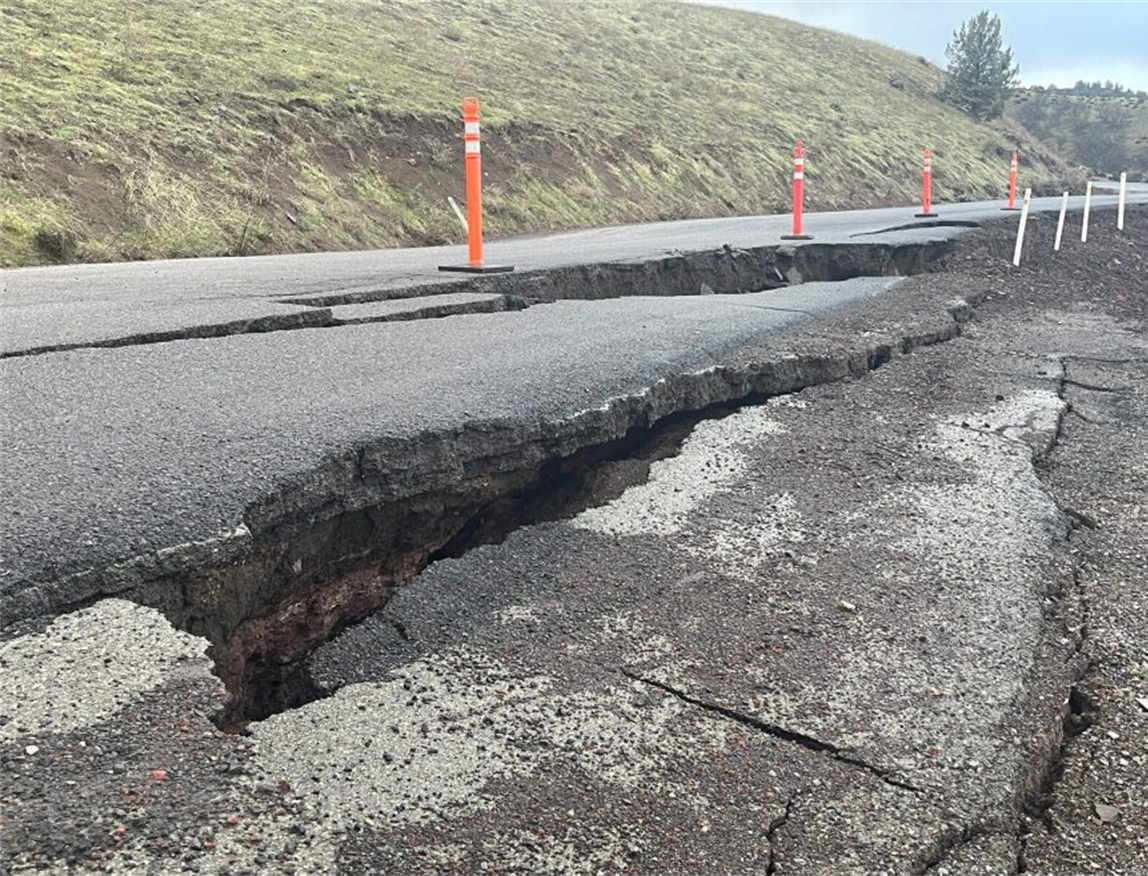
Damage to pumping systems along river. Individuals with water rights along the river have had their pumps destroyed beyond repair due to sediment clogging their systems—with no solutions proffered by KRRC. The Collier Rest Area had to be shut down because of the damage sediment did to its water filtration system.
Agriculture in the crosshairs. As mentioned, farming and ranching in the Upper Klamath Basin and in the Scott and Shasta valleys hang in the balance.
DOI must step in
There are a few ways federal agencies, including the Department of the Interior, could help us.
Among them are:
Audit where and how federal funds were spent, including Bureau of Indian Affairs and Bureau of Reclamation, and request information on overall project expenditures.
Investigate and continuously monitor the true effects of dam removal on water quality and aquatic life.
Publicize the findings so the proper parties may be held accountable, and so agriculture is protected from taking the blame for harm done to fish.
Address the incorrect ESA “threatened” status of the “Southern Oregon/Northern California Coast” coho salmon.
Encourage water storage projects to support stream flows and agriculture water availability in the Klamath Basin.
Encourage FEMA to designate the new flood zone along the Klamath River in a timely manner.
The dams are gone, and the damage to the river, its residents, and the environment is done. But it’s not too late for agriculture in the region—so long as the agencies and mainstream media are held accountable.
About the Author
Theodora Johnson freelances and raises cattle and kids with her husband in Siskiyou County, CA.
A version of this piece was sent as a letter to Interior Secretary Doug Burgum, Commerce Secretary Howard Lutnick; Bureau of Reclamation Acting Commissioner David Palumbo, Environmental Protection Agency Administrator Lee Zeldin, Agriculture Secretary Brooke Rollins, Representative Doug LaMalfa, and the Siskiyou County Board of Supervisors.
My 2019 article for RANGE magazine about Klamath Dam removal, Inconvenient Truths, won “Best Investigative Story” from the Nevada Press Association that year. See also my February 2024 article in The CATTLE Mag, Dams Down—Will Ranches Survive?
See: Gathard Engineering Consulting. Klamath River Dam and Sediment Investigation Technical Report. November 2006.
Unfortunately, USGS data on suspended sediment on most sites along the Klamath was pulled from public view earlier this year.
Bash, Jeff et al. Effects of Turbidity and Suspended Solids on Salmonids. Final Research Report. University of Washington. 2001.
Personal communication, Rex Cozzalio, Klamath River resident, March 18, 2025.
Personal communication, Albert Kutzkey, April 24, 2025.
The report was funded by U.S. Fish and Wildlife Service. See Klamath River Expert Panel Final Report: Scientific Assessment of Two Dam Removal Alternatives on Resident Fish – Klamath IFRMP
Betty Hall, Shasta Tribal Historian. “Historical Records of the Klamath River, Its People, and Fish.” October 4, 2009. The Klamath was, “since time immemorial,” historically unfit for Coho salmon.


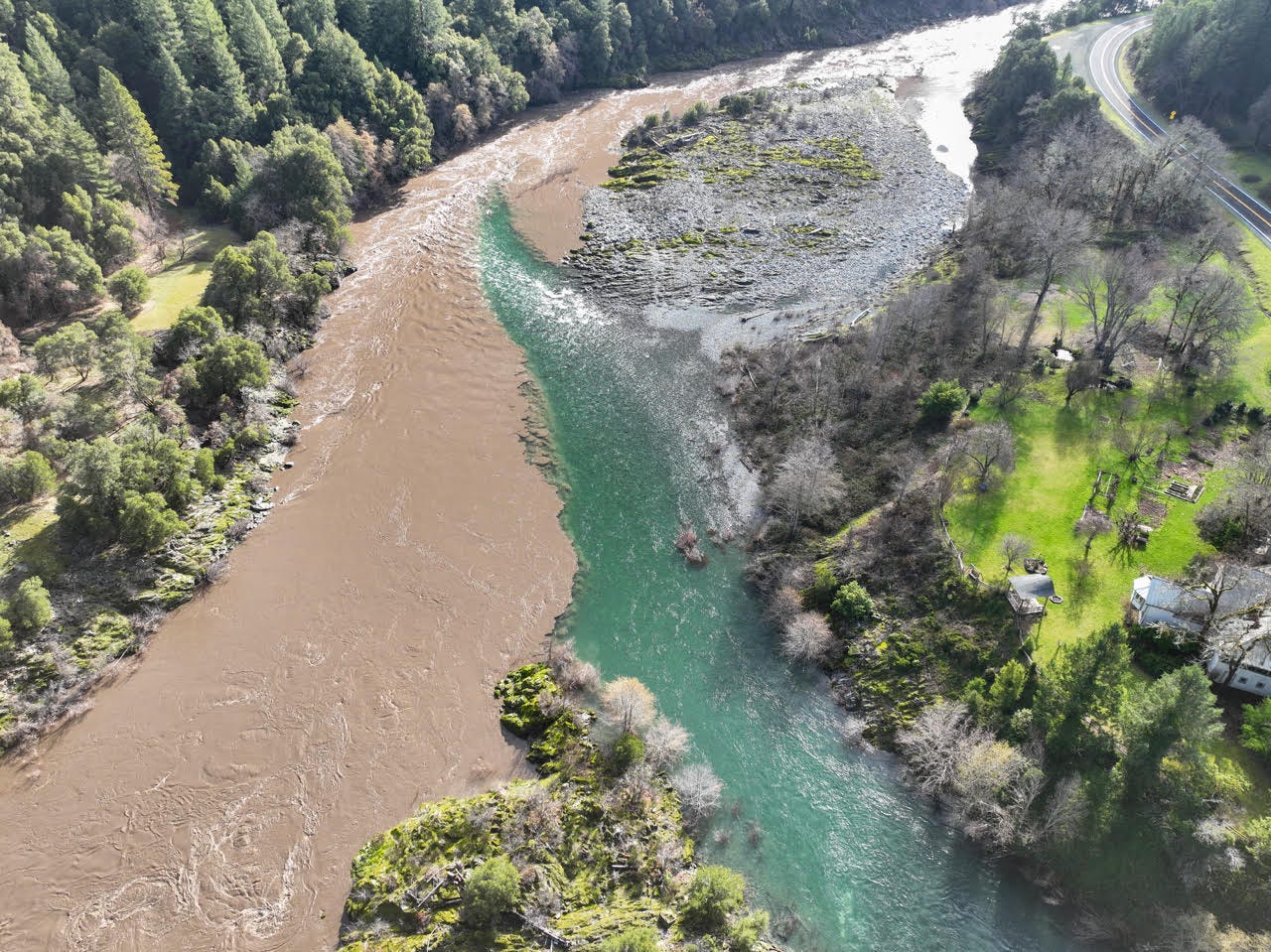
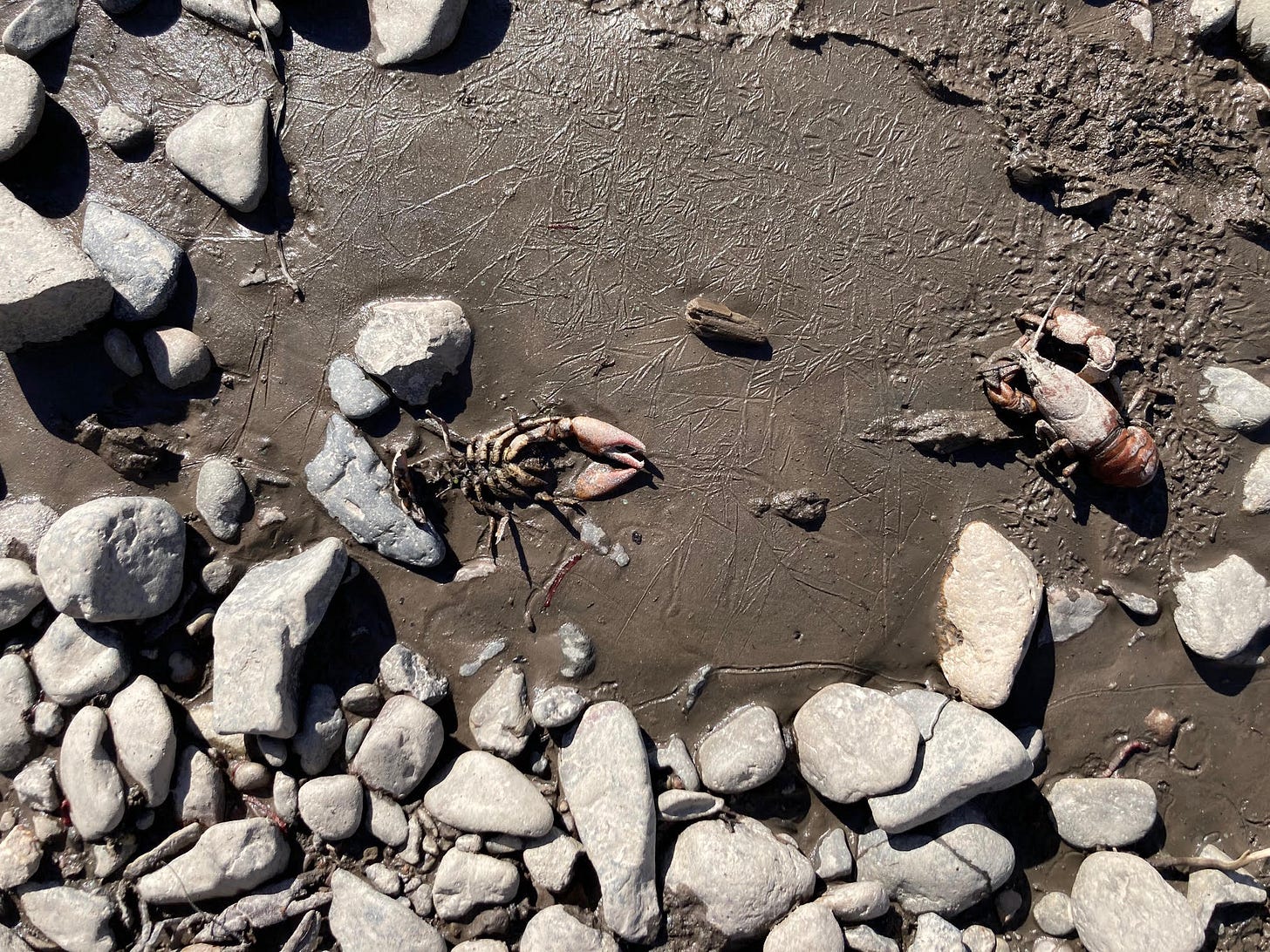
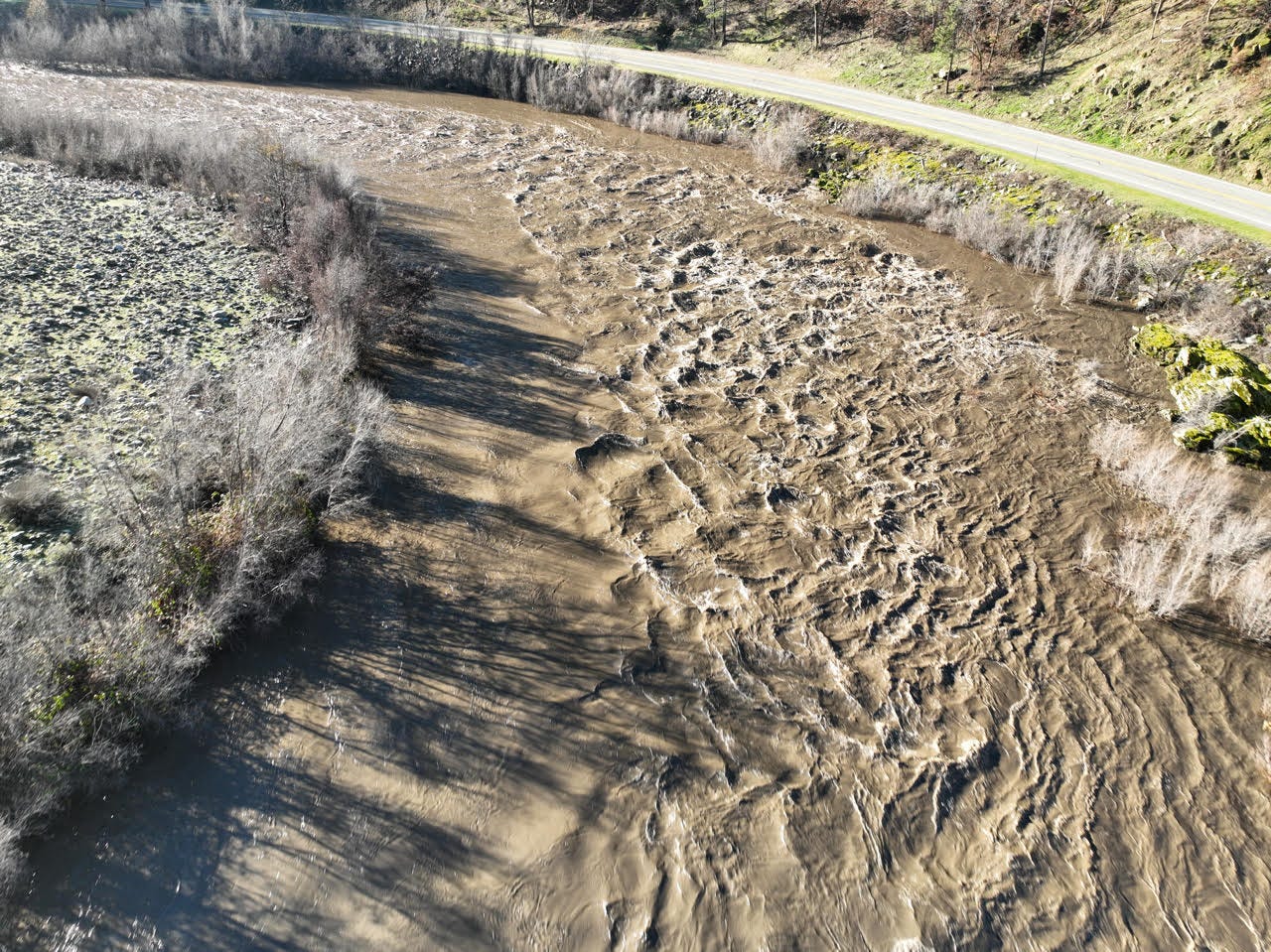

Incredible and important piece. Thank you Theodora for breaking the media silence on what has happened to the Klamath after dam removals.
The dark side of dam removals…. Most of the general public is totally clueless… and most are in disbelief of the hardships now…
Oh, but it is for the salmon.